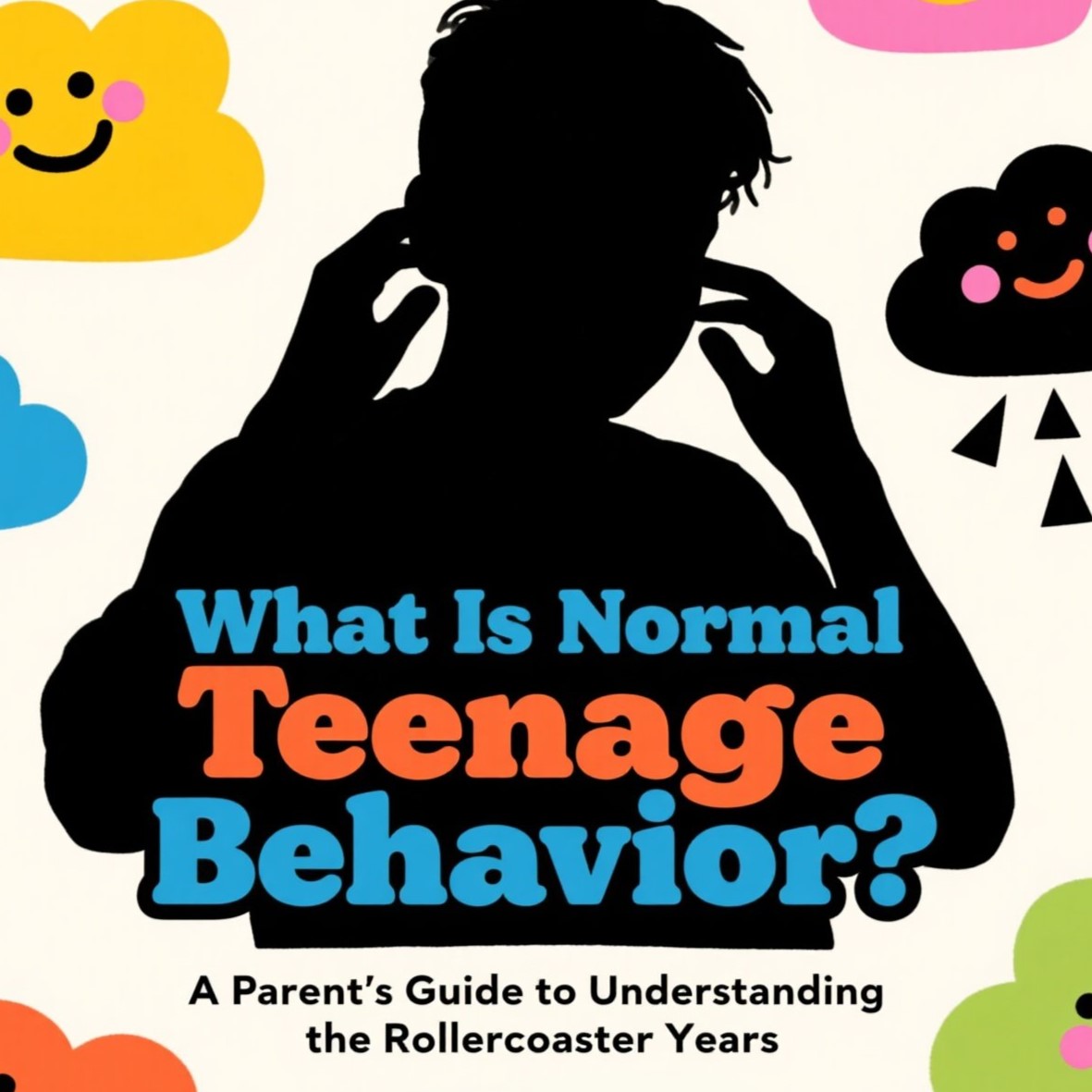The teenage years can feel like a storm no parent is ever fully prepared for. One moment, your child is laughing at dinner, sharing stories about their day, and asking for your advice. The next, they’re rolling their eyes, slamming their bedroom door, and insisting you “just don’t get it.” Sound familiar?
Welcome to adolescence—a stage that is messy, confusing, beautiful, and yes, absolutely normal. But as a parent, it can be hard to tell the difference between typical teenage behavior and something that might require a closer look. Let’s dive into what’s considered “normal” behavior for teenagers, so you can better navigate these years without losing your sanity (or your relationship with your teen).
1. Mood Swings 🌦️
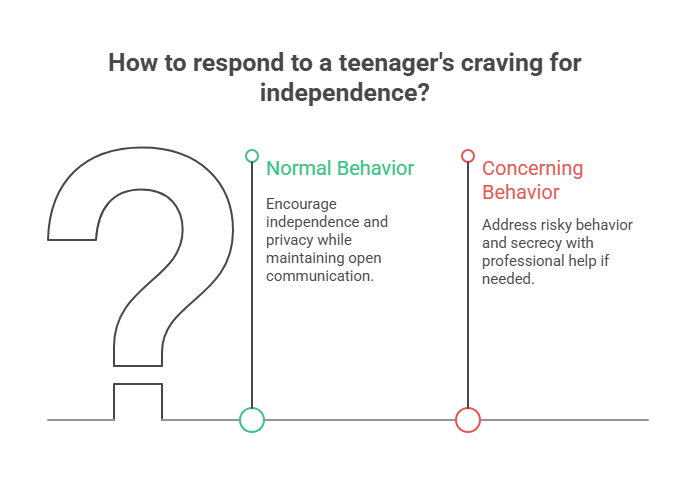
Hormonal changes, identity shifts, and the stress of growing up can make teenagers go from sunshine to thunderstorms in minutes. It’s not unusual for them to be cheerful in the morning and grumpy by evening—sometimes without any obvious reason.
👉 What’s normal: Moodiness, occasional irritability, and needing space.
👉 What’s concerning: Long-lasting sadness, withdrawal from activities they used to love, or signs of depression.
2. Craving Independence ✨🚪
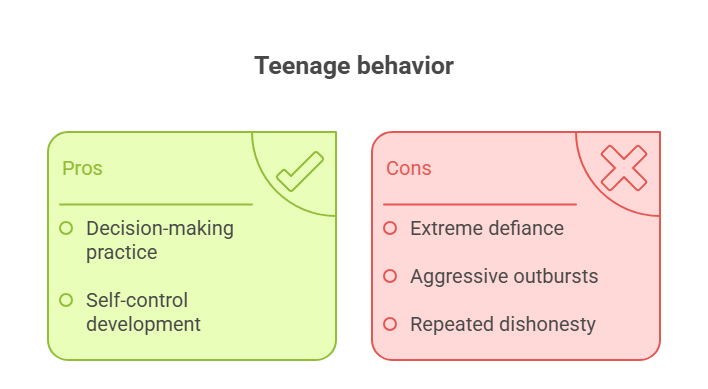
Teenagers often want to pull away from parents and lean more on peers. They may spend hours texting, hanging out with friends, or isolating in their rooms. This isn’t rejection—it’s part of learning who they are outside of family.
👉 What’s normal: Wanting more privacy, making independent choices, and pushing boundaries.
👉 What’s concerning: Completely shutting out family, engaging in risky peer-influenced behavior, or becoming secretive in harmful ways.
3. Testing Boundaries 🚧
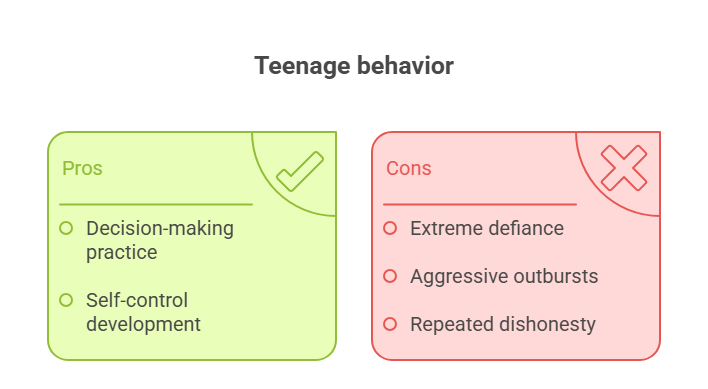
If it feels like your teen argues with every rule you set, congratulations—you’re experiencing classic teenage behavior. Challenging limits is how they practice decision-making and self-control.
👉 What’s normal: Negotiating curfews, complaining about chores, or breaking small rules.
👉 What’s concerning: Consistently defying authority in extreme ways, aggressive outbursts, or repeated dishonesty.
4. Intense Friendships & Social Focus 💬👯♀️
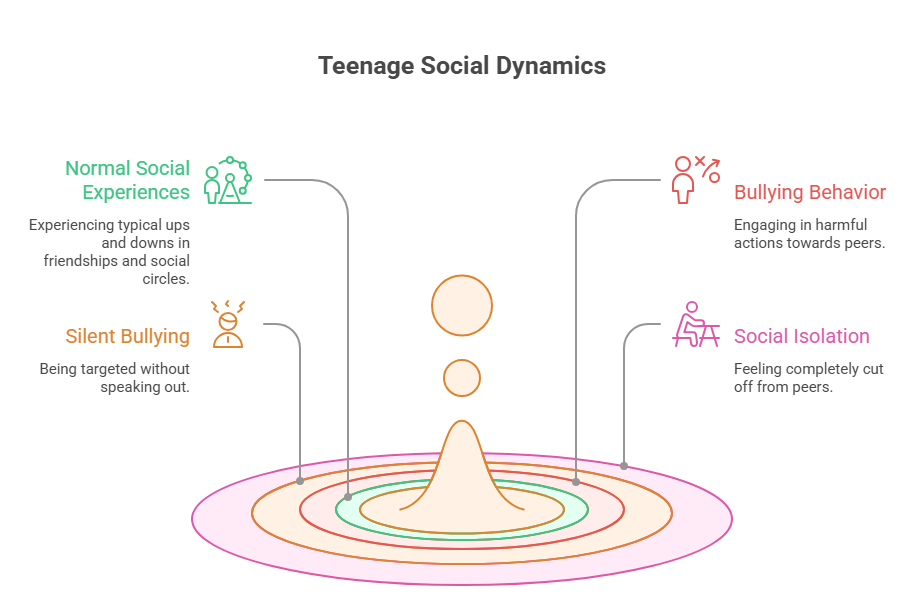
Friends become everything during the teenage years. Teens might feel devastated over a small argument with a friend or ecstatic over an invitation to a party. Social approval feels like survival at this stage.
👉 What’s normal: Caring deeply about friendships, changing friend groups, or experiencing social drama.
👉 What’s concerning: Bullying others, being bullied in silence, or complete isolation from peers.
5. Identity Exploration 🎭
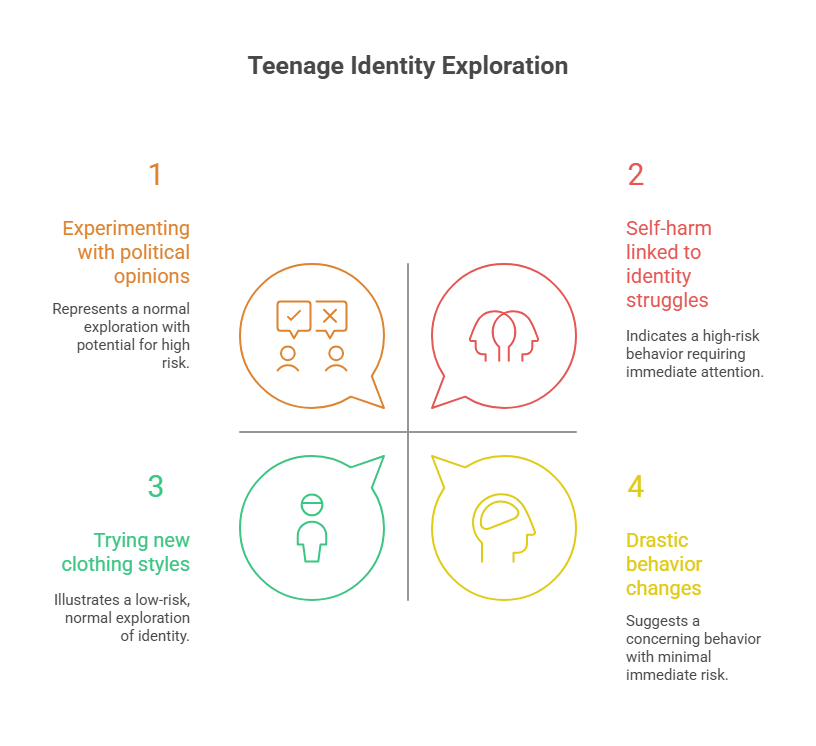
Teenagers are like actors trying on different roles to see which fits. They may experiment with clothing styles, music tastes, political opinions, or even hobbies—sometimes changing week to week.
👉 What’s normal: Switching interests, trying new looks, or exploring values.
👉 What’s concerning: Drastic, unsafe behavior changes, or signs of self-harm linked to identity struggles.
6. Strong Opinions & Rebellion 🗣️🔥
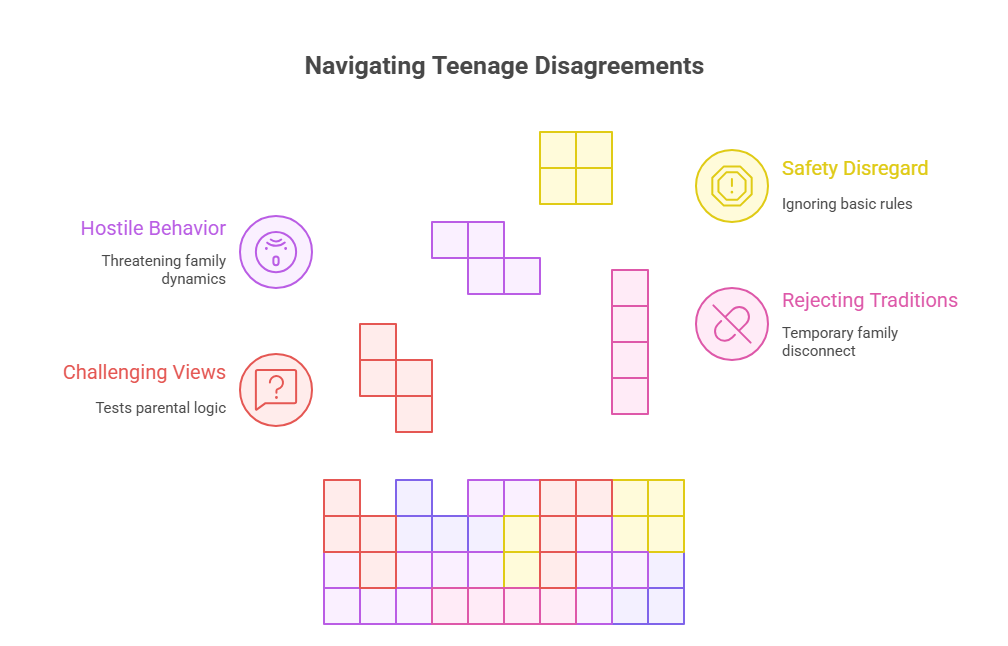
Suddenly, your teen knows everything. They’ll challenge your views, argue passionately, and point out the flaws in your logic. As exhausting as it can be, this is part of learning to think critically and independently.
👉 What’s normal: Arguing, debating, or rejecting family traditions temporarily.
👉 What’s concerning: Hostility that turns threatening, or refusal to follow even basic safety rules.
7. Risk-Taking & Experimentation 🎲
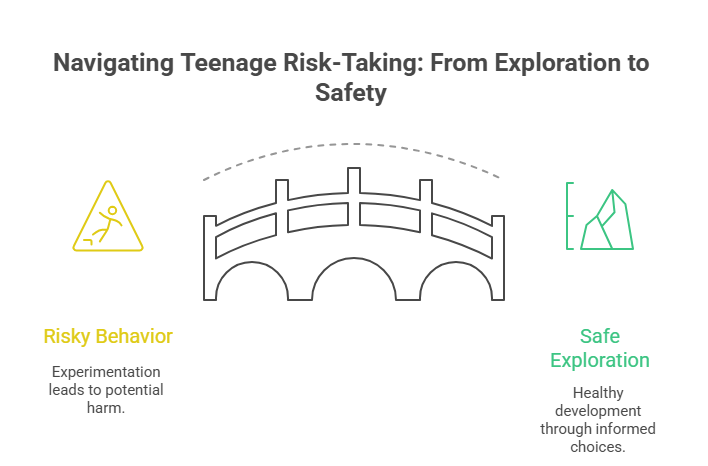
Teen brains are wired for risk. They may try new hairstyles, extreme sports, or even push into unsafe territory with alcohol or peer pressure. While risky, this thrill-seeking is tied to brain development.
👉 What’s normal: Trying new activities, mild rebellion, or curiosity.
👉 What’s concerning: Repeated dangerous behavior, substance abuse, or law-breaking.
💡 Final Thoughts: Embracing the Chaos
Normal teenage behavior is a blend of confusion, change, and growth. Mood swings, boundary-pushing, and independence-seeking aren’t signs of a bad kid—they’re milestones on the path to adulthood.
As parents, the key is balance:
- Set firm but fair boundaries.
- Listen without judgment.
- Keep communication open—even when it feels one-sided.
Think of adolescence like a rollercoaster 🎢—sometimes thrilling, sometimes terrifying, but always moving forward. The twists and turns are part of the ride, and with patience, empathy, and guidance, both you and your teen will make it through stronger than before.

